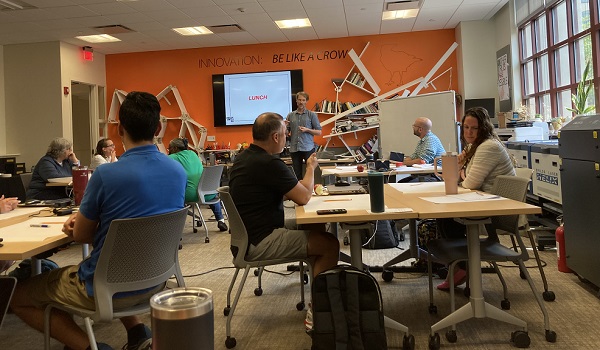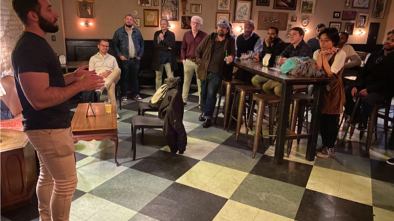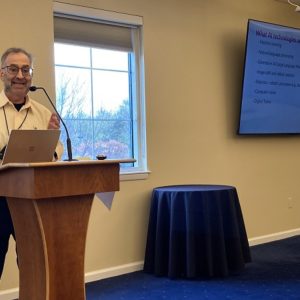Educators Learn How to Teach Innovation via Montclair State 3D Printing Workshop
In August, NJTechWeekly.com visited Jason Frasca and Iain Kerr, professors at Montclair State University (MSU), where they were conducting a 3D printing and innovation workshop for teachers.
The objective of the workshop was to give educators an understanding of how to use 3D printers, how to use digital-design software to effectively engage in 3D printing and design, how to teach those skills in the classroom to young people, and then how to instill creativity and innovation in those approaches.
The workshops are a collaboration between Picatinny Arsenal, a U.S. Army research facility in Rockaway, and the MIX Lab (MSU), with Picatinny Arsenal paying for the educators to attend.
“Picatinny Arsenal supports STEM [science, technology, engineering, math] and STEAM [science, technology, engineering, arts, math] education in New Jersey K-12 school systems by providing 3D printers and support for 3D printing and robotics teams in high schools,” Frasca told us. “They engaged us many years ago to teach the teachers how to use their 3D printers.” The workshops now go beyond just instruction in how to use the printers. Educators learn how to use digital-design software to teach creativity and 21st-century skills in the classroom through the medium of 3D printing and computer-aided design (CAD) software, with the goal of empowering students by giving them autonomy and agency. “The workshop is designed to model autonomy and agency with the teachers, so they can bring this powerful approach to teaching into their classrooms,” Frasca said.
At the beginning of the day, NJTechWeekly.com watched Kerr teach some rudimentary design skills to the teachers, allowing them to use their whole bodies to think big and concentrate on the design they were making, without feeling constrained by expectations. As Frasca explained, bridging the gap between the analog and the digital allows people to ground themselves in what they’re trying to create and design. By teaching some rudimentary drawing skills and allowing the students, or in this case, the educators, to connect the rectangular and circular shapes that are available both in CAD software and in analog space, it builds this “muscle memory that allows teachers to engage in a much deeper level with the software and understand how they can manifest a project and bring that to into a physical space.”
Frasca added that most design software is taught by introducing every single tool for six months, without the students ever making anything. “Our approach is to, within 25 minutes, get everybody actually creating something that they could 3D-print, so that very quickly, with basic tools, they can create a cube which can be manipulated into a sphere. We show how one object can be made into virtually anything they want to make.”
This is one way to instill 20th-century skills in the students these teachers teach. Frasca explained that traditional paths towards innovation involve ideation. However, “We can only ideate what we know, what you’ve already seen and been exposed to, heard or engaged with, right? And therefore, we can never ideate anything novel or unique. Novelty requires approaches and tools and frameworks to actually get to some different, innovative place. We demonstrate these frameworks and approaches within the design software, so teachers, and ultimately their students, are simultaneously learning how to design beyond what they can imagine.”
During the afternoon, Kerr emphasized the importance of students learning to find and use tools independently rather than being shown directly. The class discussed the benefits of using tools like “loft” for flexibility and the ability to modify designs. Kerr also highlighted the significance of students understanding design processes and pathways. Students should be allowed to keep multiple tools and tabs open, so they can easily jump between these tools to be creative. Students should know that “there is not one right way to create a design, but multiple ways.”
One of the exercises during the workshop, designated a “gallery walk,” involved the teachers going around the room to look at each other’s creations. Kerr suggested that teachers implement this with their students, so they can discuss their work and learn about techniques and cool projects from fellow classmates.
The enthusiasm for this workshop was visible, as the teachers in the room quickly learned how to use the tools and how to draw concepts that could turn into objects they hadn’t previously envisaged.




